2019-11-14 - Nº 237
Editorial
Esta é a Newsletter Nº 237 que se apresenta com o mesmo formato que as anteriores. Se gostar da Newsletter partilhe-a!
Todas as Newsletters encontram-se indexadas no link.
Esta Newsletter tem os seguintes tópicos:
Faz hoje anos que nascia, em 1765, Robert Fulton. Este inventor, engenheiro e artista americano trouxe o barco a vapor da fase experimental para o sucesso comercial. Ele não inventou o barco a vapor, construído no início dos anos 1700, mas aplicou suas habilidades de engenharia no seu projecto. Ele mudou as proporções, equilíbrio e velocidades das ideias já propostas. Em 1807, o trabalho foi concluído no Clermont, o primeiro barco a vapor que foi realmente bem-sucedido e o culminar de muitos anos de trabalho. A sua viagem inaugural foi em 17 de Agosto de Nova York a Albany, uma distância de 150 milhas concluída em 32 horas. Génio mecânico com muitos talentos, ele também projectou um sistema de vias navegáveis interiores, um submarino (Nautilus, 1801) e um navio de guerra a vapor.
Faz também hoje anos que nascia, em 1807, Auguste Laurent. Este químico francês desenvolveu a química orgânica como uma ciência distinta. Por um tempo, ele ajudou Jean Dumas e alargou o seu trabalho, entendendo os compostos orgânicos como derivados das moléculas de hidrocarbonetos. Na cristalografia, ele foi influenciado por René-Just Haüy. Laurent reconheceu que os átomos de carbono formavam ligações com base numa estrutura de pirâmide. Além disso, contra a opinião de muitos colegas, ele rejeitou a ideia de Jöns Berzelius de que mesmo moléculas orgânicas eram formadas a partir de entidades carregadas positiva e negativamente. Laurent mostrou (1836) que um átomo de hidrogénio com carga positiva poderia ser substituído por um átomo de cloro com carga negativa. Ele reconheceu famílias de compostos orgânicos com grupos característicos.
Faz igualmente hoje anos que nascia, em 1863, Leo Baekeland. Este industrial e químico belga-americano inventou o primeiro plástico termo-endurecível, a baquelite, que não amaciava quando aquecido. A sua primeira invenção bem-sucedida foi Velox (na década de 1890), um papel fotográfico que poderia ser usado com luz artificial em vez de luz solar, que ele vendeu em 1899 a George Eastman. Ele então experimentou encontrar um substituto sintético para goma-laca, um isolador útil de fios em bobinas eléctricas. Eventualmente, ele foi capaz de controlar o calor e a pressão para uma reacção formaldeído-fenol. Em 1909, ele mostrou o primeiro plástico totalmente sintético do mundo, que poderia ser usado não apenas para isoladores, mas moldado em botões, maçanetas e inúmeros outros itens. Com este produto patenteado, ele ajudou a fundar a moderna indústria de plásticos.
Faz também hoje anos que nascia, em 1891, Frederick Banting. Este médico fisiologista canadiano, assistido por Charles H. Best, foi o primeiro a extrair (1921) a hormona insulina do pâncreas. As injecções de insulina provaram ser o primeiro tratamento eficaz para o diabetes, uma doença na qual a glicose se acumula em quantidades anormalmente altas no sangue. Banting recebeu uma parte do Prêmio Nobel de Fisiologia ou Medicina de 1923 por essa conquista.
Por fim, faz hoje anos que nascia, em 1913, Malcom McLean. Este empresário e inventor americano desenvolveu o contentor de transporte de metal que agora é usado para transportar mercadorias em navios, comboios e camiões de mercadorias. Os contentores padronizados são fortes o suficiente para empilhar várias camadas nos navios e simplificam bastante o manuseio de carga por guindastes, com grande economia de custos com o trabalho de carregar e descarregar mercadorias num número maior de unidades menores de caixas e sacos. Ao dirigir um único camião para transportar materiais nos primeiros anos, ele fundou a McLean Trucking Co., que se tornou a segunda maior nos EUA. Quando percebeu que um camião e sua carroçaria de carga podiam ser separados, ele expandiu para o manuseio seguro de contentores. que podem ser empilhados para transporte em massa.
Nesta semana que passou ficámos a conhecer o projecto que o GitHub está a desenvolver com vista à preservação do software open-source. O GitHub está em parceria com a Long Now Foundation, o Internet Archive, a Software Heritage Foundation, o Arctic World Archive, a Microsoft Research, a Bodleian Library e a Stanford Libraries para garantir a preservação a longo prazo do software de código aberto do mundo. Esse conhecimento inestimável será protegido, pelo armazenamento de várias cópias, continuamente, em vários formatos e locais de dados, incluindo um arquivo de longo prazo projetado para durar pelo menos 1.000 anos. No dia 2 de Fevereiro de 2020 será feito um snapshot do que se encontra no Github e serão arquivados no Arctic Code Vault todos os repositórios públicos activos do GitHub, além de repositórios inactivos significativos, conforme determinado por estrelas, dependências e um painel consultivo. O snapshot consistirá no HEAD da ramificação padrão de cada repositório, menos os binários maiores que 100 KB. Cada repositório será empacotado como um único arquivo TAR. Para maior densidade e integridade dos dados, a maioria dos dados será armazenada em código QR. Um índice e um guia legíveis por humanos detalham a localização de cada repositório e explicam como recuperar os dados. O Arctic Code Vault do GitHub é um repositório de dados preservado no Arctic World Archive (AWA). O arquivo encontra-se localizado numa antiga mina de carvão desactivada a 250 metros de profundidade no permafrost de uma montanha no Artico em Svalbard.
Na Newsletter desta semana apresentamos diversos projetos de maker assim como um modelo 3D que poderá ser útil. É apresentada a revista newelectronics de 12 de Novembro de 2019.
 João Alves ([email protected])
João Alves ([email protected])
O conteúdo da Newsletter encontra-se sob a licença  Creative Commons Attribution-NonCommercial-ShareAlike 4.0 International License.
Creative Commons Attribution-NonCommercial-ShareAlike 4.0 International License.
Novidades da Semana

Preserving open source software for future generations
"The world is powered by open source software. It is a hidden cornerstone of modern civilization, and the shared heritage of all humanity. The mission of the GitHub Archive Program is to preserve open source software for future generations. GitHub is partnering with the Long Now Foundation, the Internet Archive, the Software Heritage Foundation, Arctic World Archive, Microsoft Research, the Bodleian Library, and Stanford Libraries to ensure the long-term preservation of the world's open source software. We will protect this priceless knowledge by storing multiple copies, on an ongoing basis, across various data formats and locations, including a very-long-term archive designed to last at least 1,000 years. Why we use multiple forms of storage As today’s vital code becomes yesterday’s historical curiosity, it may be abandoned, forgotten, or lost." [...]
Outras Notícias

OpenTitan – Open sourcing transparent, trustworthy, and secure silicon
"Security begins with secure infrastructure. To have higher confidence in the security and integrity of the infrastructure, we need to anchor our trust at the foundation—in a special-purpose chip. Today, along with our partners, we are excited to announce OpenTitan—the first open source silicon root of trust (RoT) project. OpenTitan will deliver a high-quality RoT design and integration guidelines for use in data center servers, storage, peripherals, and more. Open sourcing the silicon design makes it more transparent, trustworthy, and ultimately, secure. Anchoring trust in silicon Silicon RoT can help ensure that the hardware infrastructure and the software that runs on it remain in their intended, trustworthy state by verifying that the critical system components boot securely using authorized and verifiable code." [...]

ASUS & Google Team Up for ‘Tinker Board’ AI-Focused Credit-Card Sized Computers
"ASUS and Google have joined forces to develop a new project that the companies are calling ‘Tinker Board’ single board computers (SBCs). With a footprint not much larger than a credit card, the systems are designed for building small systems to work on AI inference applications like image recognition. The systems in question are the Tinker Edge T and Tinker Edge R. The former is based on the NXP i.MX8M with an Edge TPU chip that accelerates TensorFlow Lite, whereas the Tinker Edge R is powered by the Rockchip RK3399 Pro processor with an NPU for 4K machine learning. The SBCs officially support Android and Debian operating system, though nothing prevents them from running Linux or other OSes. Both Tinker Edge T and Tinker Edge R computers feature active cooling as well as mainstream I/O interfaces, including GbE, USB 3.0, and HDMI. ASUS and Google position their Tinker Edge T and Tinker Edge R for various edge AI applications that have to be compact and very energy efficient." [...]
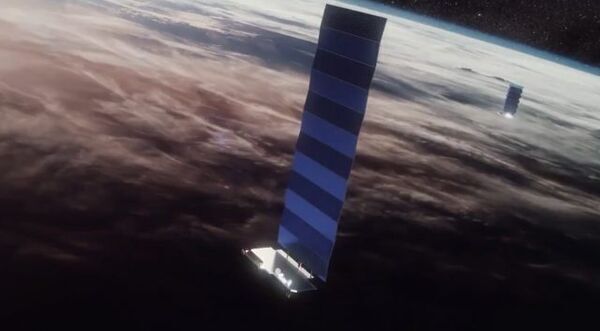
Starlink Mission
"SpaceX is targeting Monday, November 11 at 9:56 a.m. EST, 14:56 UTC, for launch of 60 Starlink satellites from Space Launch Complex 40 (SLC-40) at Cape Canaveral Air Force Station, Florida. A backup launch opportunity is available at 9:34 a.m. EST, 14:34 UTC, on Tuesday, November 12. Falcon 9’s first stage supported the Iridium-7, SAOCOM-1A, and Nusantara Satu missions, and the fairing was previously flown on Falcon Heavy’s Arabsat6A mission earlier this year. Following stage separation, SpaceX will land Falcon 9’s first stage on the “Of Course I Still Love You” droneship, which will be stationed in the Atlantic Ocean. Approximately 45 minutes after liftoff, SpaceX’s two fairing recovery vessels, “Ms. Tree” and “Ms." [...]

Panasonic Develops Battery Management Technology to Measure Electrochemical Impedance of multi-cell stacked Lithium-Ion Batteries
"This technology contributes to the realization of a sustainable society by helping facilitate reuse and recycling of lithium-ion batteries. Panasonic Corporation (Panasonic) announced today that it has developed a new battery management technology that measures a battery's electrochemical impedance[1], which is an effective method of evaluating the residual value of lithium-ion batteries in devices. This technology is expected to be applied to various devices that use lithium-ion battery modules with many battery cells stacked in series and to future vehicles. Panasonic has developed this technology in collaboration with Professor Masahiro Fukui of Ritsumeikan University. Panasonic developed a new battery monitoring IC (BMIC) test chip, measurement algorithm, and software, while Ritsumeikan University evaluated the performance using actual batteries. Current applications of lithium-ion batteries are expanding to the field of industrial devices and mobility, and the importance of reuse and recycling is also increasing." [...]
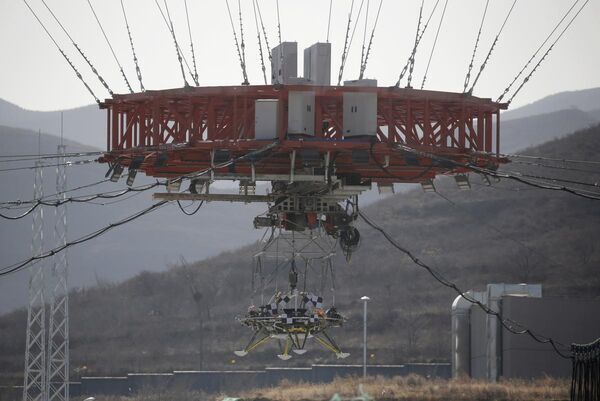
China completes crucial landing test for first Mars mission in 2020
"China on Thursday successfully completed a crucial landing test in northern Hebei province ahead of a historic unmanned exploration mission to Mars next year. China is on track to launch its Mars mission, Zhang Kejian, head of the China National Space Administration, said on Thursday, speaking to foreign diplomats and the media before the test. The Mars lander underwent a hovering-and-obstacle avoidance test at a sprawling site in Huailai, northwest of Beijing. The site was littered with small mounds of rocks to simulate the uneven terrain on Mars which the lander would have to navigate on its descent to the planet’s surface. “In 2016, China officially began the Mars exploration mission work, and currently all of the different development work is progressing smoothly,” Zhang said. “The hovering-and-obstacle avoidance test for the Mars lander being carried out today makes up a crucial part of the development process." [...]
Ciência e Tecnologia

Nano technology breakthrough enables conversion of infrared light to energy
"Invisible infrared light accounts for half of all solar radiation on the Earth’s surface, yet ordinary solar energy systems have limited ability in converting it to power. A breakthrough in research at KTH could change that. A research team led by Hans Ågren, professor in theoretical chemistry at KTH Royal Institute of Technology, has developed a film that can be applied on top of ordinary solar cells, which would enable them to use infrared light in energy conversion and increase efficiency by 10 percent or more. “We have achieved a 10 percent increase in efficiency without yet optimizing the technology,” Ågren says. “With a little more work, we estimate that a 20 to 25 percent increase in efficiency could be achieved.” Photosensitive materials used in solar cells, such as the mineral perovskite, have a limited ability to respond to infrared light. The solution, developed with KTH researchers Haichun Liu and Qingyun Liu, was to combine nanocrystals with chains of microlenses." [...]

Atomic-level imaging could offer roadmap to metals with new properties
"High-entropy alloys, which are made from nearly equal parts of several primary metals, could hold great potential for creating materials with superior mechanical properties. But with a practically unlimited number of possible combinations, one challenge for metallurgists is figuring out where to focus their research efforts in a vast, unexplored world of metallic mixtures. A team of researchers at the Georgia Institute of Technology has developed a new process that could help guide such efforts. Their approach involves building an atomic resolution chemical map to help gain new insights into individual high-entropy alloys and help characterize their properties. In a study published Oct. 9 in the journal Nature, the researchers described using energy-dispersive X-ray spectroscopy to create maps of individual metals in two high-entropy alloys. This spectroscopy technique, used in conjunction with transmission electron microscopy, detects X-rays emitted from a sample during bombardment by an electron beam to characterize the elemental composition of an analyzed sample." [...]
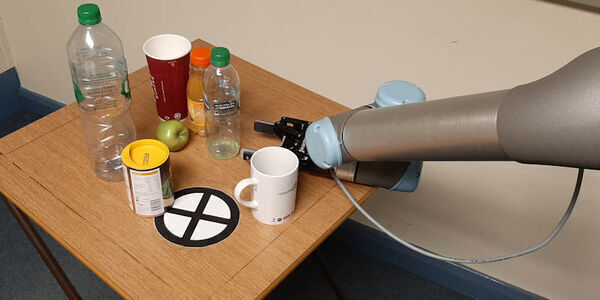
Worker robots that learn from mistakes
"Practise makes perfect – it is an adage that has helped humans become highly dexterous, and now it is an approach that is being applied to robots. Computer scientists at the University are using the artificial intelligence (AI) techniques of automated planning and reinforcement learning to “train” a robot to find an object in a cluttered space, such as a warehouse shelf or in a fridge – and move it. The aim is to develop robotic autonomy, so the machine can assess the unique circumstances presented in a task and find a solution – akin to a robot transferring skills and knowledge to a new problem. The Leeds researchers are presenting their findings today at the International Conference on Intelligent Robotics and Systems in Macau, China. Their paper can be read here. The big challenge is that in a confined area, a robotic arm may not be able to grasp an object from above." [...]
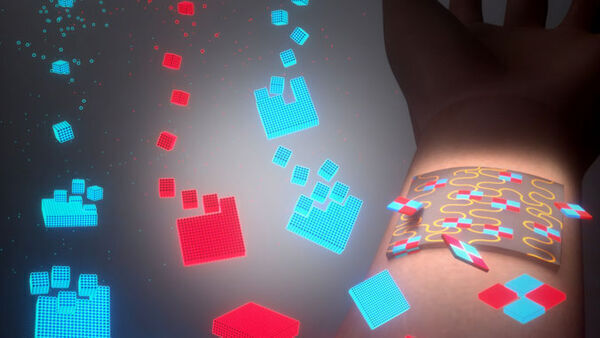
Research team lays groundwork for nanoscale particle discoveries
"Materials made from nanoscale particles, ranging in size from a few atoms up to less than one-percent of the width of a human hair, create opportunities to design new functional materials having unique responses to external stimuli, such as light, electrical and magnetic fields and mechanical deformation. Embedding such particles in a “matrix” (referring to a surrounding medium or structure) composed of a different material makes it possible to create nanocomposites that enable new technologies. The central challenges in developing transformative nanoparticle-based devices have been summarized in an article review co-authored by Tyler Ray, a University of Hawaiʻi at Mānoa engineering professor, and Matthew Begley and Daniel Gianola of UC Santa Barbara’s College of Engineering. “Bridging functional nanocomposites to robust macroscale devices,” published in a recent issue of SCIENCE, illustrates that a central need for tomorrow’s materials scientists and engineers is to gain sufficient control during processing at multiple size scales. In order to create new devices, synthesized materials must be able to survive, intact, the strong forces that are encountered in manufacturing processes, at size scales from the atomic scale to the human scale. The review describes the current state of the field, maps out future research directions and identifies challenges to progress." [...]

Bundlemers
"New polymer units created by UD, Penn researchers could enable materials breakthroughs From tires to clothes to shampoo, many ubiquitous products are made with polymers, large chain-like molecules made of smaller subunits called monomers, bonded together. Now, a team of researchers from the University of Delaware and the University of Pennsylvania, with primary support from the U.S. Department of Energy Biomolecular Materials Program, has created a new fundamental unit of polymers that could usher in a new era of materials discovery. The researchers designed and created rigid, self-assembling, customizable polymer chains by linking together new building blocks called bundlemers — a term coined at UD. They recently described their work in the journal Nature. To create bundlemers, the team assembles four individual peptides, themselves short chains of amino acids, into nanoscopic cylinders. The bundlemer cylinders are then linked together, end-to-end, through a highly efficient and controlled series of chemical reactions known as “click” chemistry." [...]

Spiders and ants inspire metal that won’t sink
"University of Rochester researchers, inspired by diving bell spiders and rafts of fire ants, have created a metallic structure that is so water repellent, it refuses to sink—no matter how often it is forced into water or how much it is damaged or punctured. Could this lead to an unsinkable ship? A wearable flotation device that will still float after being punctured? Electronic monitoring devices that can survive in long term in the ocean? All of the above, says Chunlei Guo, professor of optics and physics, whose lab describes the structure in ACS Applied Materials and Interfaces. The structure uses a groundbreaking technique the lab developed for using femtosecond bursts of lasers to “etch” the surfaces of metals with intricate micro- and nanoscale patterns that trap air and make the surfaces superhydrophobic, or water repellent." [...]
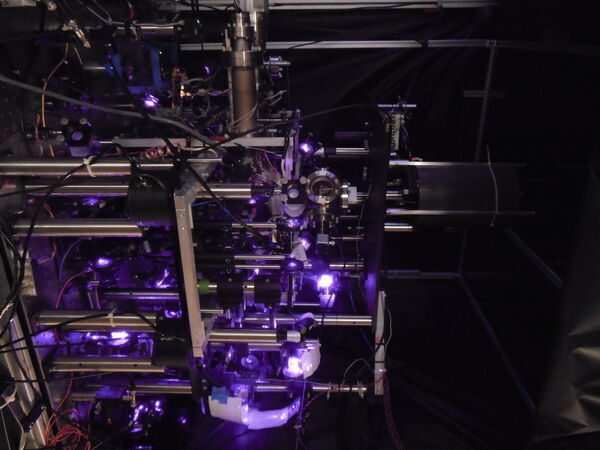
A new way to measure gravity: Using floating atoms
"A team of researchers at the University of California, Berkeley, has found a new way to measure gravity—by noting differences in atoms in a superposition state, suspended in the air by lasers. In their paper published in the journal Science, the group describes their new technique and explain why they believe it will be more useful than traditional methods. Currently, the standard way to conduct gravity experiments is to drop things down shielded tubes and measure them as they whiz by instruments. In addition to giving researchers a very brief glimpse of gravitational interactions, such methods often fall prey to inadvertent stray magnetic fields. In this new effort, the researchers have found a way to measure gravity that does not involve dropping objects at all. The new approach involved releasing a cloud of cesium atoms into the air in a small chamber and then using flashing lights to split several of them into a superposition state." [...]
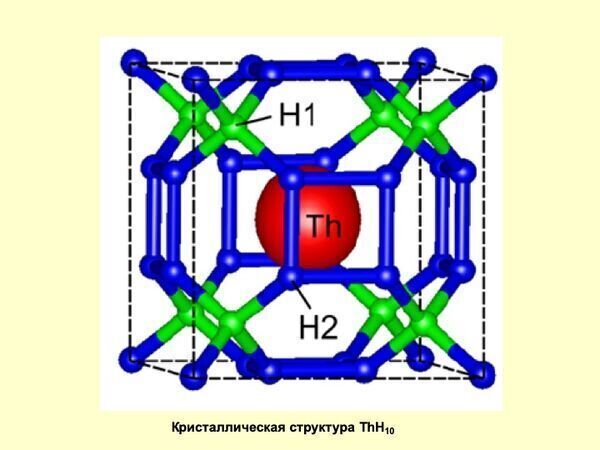
Thorium superconductivity: scientists discover a new high-temperature superconductor
"A group of scientists led by Artem Oganov, Professor at Skoltech and MIPT, and Dr. Ivan Troyan at the Institute of Crystallography of RAS have succeeded in synthesizing thorium decahydride (ThH10), a new superconducting material with a very high critical temperature (161 K). The results of their study supported by a Russian Science Foundation (RSF) grant were published in the journal Materials Today. A truly remarkable property of quantum materials, superconductivity is a complete loss of electrical resistance under quite particular, and sometimes, very harsh conditions. Despite the tremendous potential for quantum computers and high-sensitivity detectors, the application of quantum materials is hindered by the fact that superconductivity typically manifests itself at very low temperatures or extremely high pressures. Until recently, the list of superconductors was topped by mercury-containing cuprate that becomes superconducting at 135 K (-138 °C). This year, lanthanum decahydride, LaH10, has set a new record of -13 oС, which is very close to room temperature, although in the case of LaH10 superconductivity is achieved at nearly 2 million atmospheres, a pressure that can hardly be attained in real life." [...]
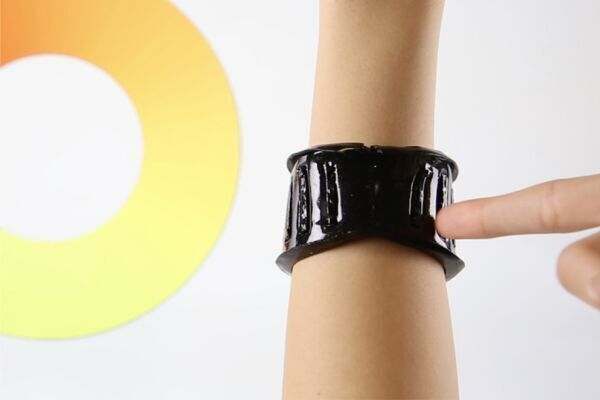
Researchers have developed self-healing soft electronics
"While flexible electronics can pose certain advantages, they are often subject to a rather short life, and can be difficult if not impossible to repair. As a solution to this conundrum, researchers from Carnegie Mellon University and the University of Tokyo have been exploring a novel material that can fuse itself together automatically, and conduct electricity. The composite material is called MWCNTs-PBS, or multi-walled carbon nanotubes surrounded by a flexible polymer polyborosiloxane outer region. When two sections need to be attached, they’re simply pressed together and like magic it forms an electrical and mechanical bond. Tests performed with the help of an Arduino Mega include pressure and touch sensing, as well as cut detection. It will be interesting to see how this technology advances in the future, perhaps leading to a day when devices just ‘heal’ themselves!" [...]
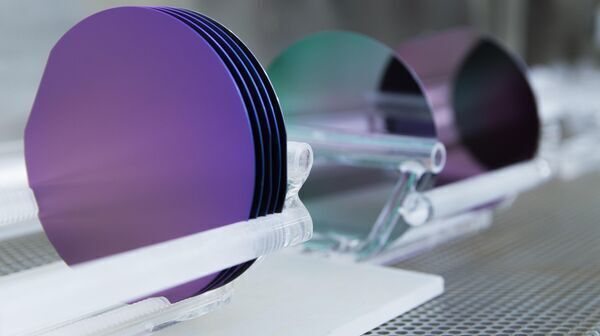
A cheaper way to scale up atomic layer deposition
"Chemical engineers at EPFL have developed a new method for atomic layer deposition, a technique commonly used in high-quality microelectronics. The new method can be used in materials with larger surfaces much more cheaply than current approaches, while preserving quality and efficiency. Atomic layer deposition (ALD) involves stacking layers of atoms on top of each other like pancakes. The atoms come from a vaporized material called a precursor. ASD is a well-established technique for manufacturing microelectronics like semiconductors and magnetic heads for sound recording, as well as sensors for bioengineering and diagnostics. However, using ALD for depositing layers on larger surfaces has been a struggle, especially when it comes to manufacturing materials that must be kept at low cost, e.g." [...]
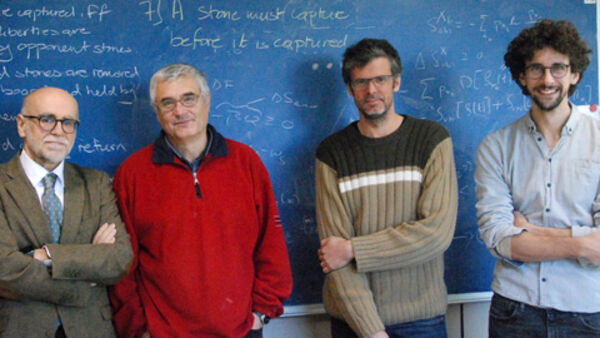
A new quantum data classification protocol brings us nearer to a future "quantum internet"
"A new protocol created by researchers at the UAB sorts and classifies quantum data by the state in which they were prepared, with more efficiency than the equivalent classical algorithm. The research was published in Physical Review X. Quantum-based communication and computation technologies promise unprecedented applications, such as unconditionally secure communications, ultra-precise sensors, and quantum computers capable of solving specific problems with a level of efficiency impossible to reach by classical computers. In recent times, quantum computers are also envisioned as nodes in a network of quantum devices, where connections are established via quantum channels and data are quantum systems that flow through the network, thus setting the bases for a future “quantum internet”. With the design of these quantum information networks come new theoretical challenges, given that it is necessary to establish optimised automated information treatment protocols to work with quantum data, in the same way as current communcation networks automatically manage information. UAB researchers have had to deal with one of these challenges for the first time: the problem with sorting data from a quantum systems network according to the state in which they were prepared. The researchers have devised an optimal procedure that can identify clusters of identically prepared quantum systems." [...]

Using light to generate order in an exotic material
"Physics experiment with ultrafast laser pulses produces a previously unseen phase of matter. Adding energy to any material, such as by heating it, almost always makes its structure less orderly. Ice, for example, with its crystalline structure, melts to become liquid water, with no order at all. But in new experiments by physicists at MIT and elsewhere, the opposite happens: When a pattern called a charge density wave in a certain material is hit with a fast laser pulse, a whole new charge density wave is created — a highly ordered state, instead of the expected disorder. The surprising finding could help to reveal unseen properties in materials of all kinds. The discovery is being reported today in the journal Nature Physics, in a paper by MIT professors Nuh Gedik and Pablo Jarillo-Herrero, postdoc Anshul Kogar, graduate student Alfred Zong, and 17 others at MIT, Harvard University, SLAC National Accelerator Laboratory, Stanford University, and Argonne National Laboratory." [...]
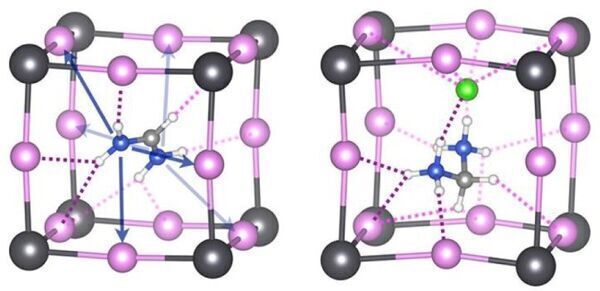
Pushing perovskite solar stability
"Solar perovskite materials could be spiked with organic cation dopants to suppress decomposition and degradation. Expanding the list of organic ingredients that comprise perovskite solar materials could boost their long-term stability and performance, KAUST researchers have predicted. Perovskites have recently captured the limelight in solar materials research because they can harvest solar energy almost as efficiently as conventional silicon solar cells and can be cheaper and easier to produce. One area where perovskites still lag behind silicon is their long-term stability. Now, Udo Schwingenschlögl from the KAUST Solar Center, and his Ph.D. student, Aleksandra Oranskaia, have found a possible solution. The most-studied perovskites for solar applications comprise a negatively charged lead-halide inorganic skeleton, partnered with positively charged organic cations, such as methylammonium (MA) or formamidinium (FA)." [...]
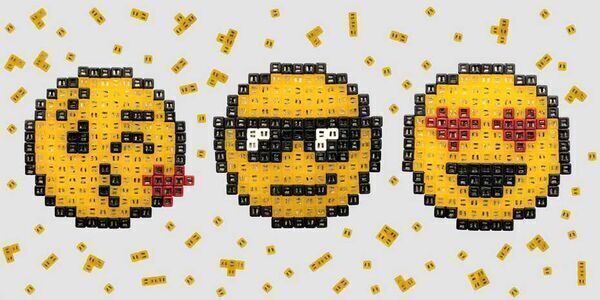
Magnets for the second dimension
"ETH scientists have developed cube-shaped magnetic building blocks that can be assembled into two-dimensional shapes and controlled by an external magnetic field. They can be used for soft robotics applications. If you’ve ever tried to put several really strong, small cube magnets right next to each other on a magnetic board, you’ll know that you just can’t do it. What happens is that the magnets always arrange themselves in a column sticking out vertically from the magnetic board. Moreover, it’s almost impossible to join several rows of these magnets together to form a flat surface. That’s because magnets are dipolar." [...]
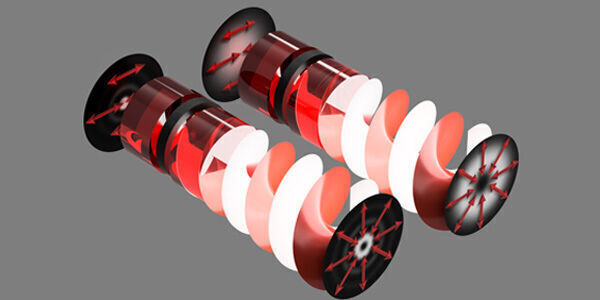
Structured light promises path to faster, more secure communications
"Quantum mechanics is embracing patterns of light to create an alphabet that can be leveraged to build a light-based quantum network. Structured light is a fancy way to describe patterns or pictures of light, but deservedly so as it promises future communications that will be both faster and more secure. Quantum mechanics has come a long way during the past 100 years but still has a long way to go. In AVS Quantum Science, from AIP Publishing, researchers from the University of Witwatersrand in South Africa review the progress being made in using structured light in quantum protocols to create a larger encoding alphabet, stronger security and better resistance to noise. “What we really want is to do quantum mechanics with patterns of light,” said co-author Professor Andrew Forbes from the School of Physics at Wits University. “By this, we mean that light comes in a variety of patterns that can be made unique - like our faces.” Since patterns of light can be distinguished from each other, they can be used as a form of alphabet." [...]
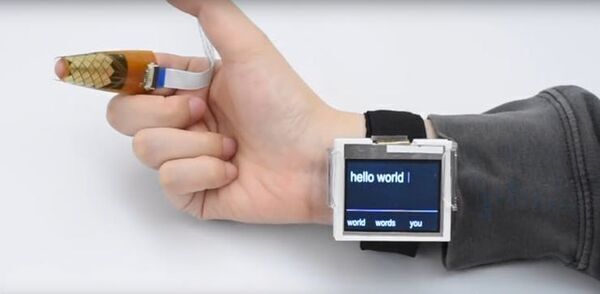
TipText Lets You Enter Text Using Thumb-Tip Gestures
"TipText features a tiny 2 x 3 grid QWERTY keyboard wrapped around the index finger. Engineers from Dartmouth College, City University of Hong Kong, Saarland University, and Stony Brook University have designed an eyes-free text entry platform that uses a miniature finger-worn QWERTY keyboard to enter text. The TipText keyboard layout was optimized by utilizing the user’s natural spatial awareness of key locations on the index finger, which is wrapped by the 2 x 3 grid flexible keyboard. The engineers state that their text platform has several benefits using the finger-tapping method, including the ability to text with one hand; text input can be carried out without being intrusive and can be utilized without having to see the input device. The TipText keyboard was designed using a flexible printed circuit that contains a printed 3 x 3 sensor matrix with diamond-shaped electrodes. A layer of resin binder was deposited between the electrode layers to isolate them from each other, and silver ink was screen-printed for the keyboard’s conductive traces." [...]

New monitoring technique lets your Remotely Operated Device do the snorkelling
"Researchers at the University of Newcastle and Macquarie University have found a novel way to remotely track fish in shallow water environments. Their findings have now been published in the Journal of Experimental Marine Biology and Ecology. They have been trialling their new method, which involves using Remotely Operated Vehicles (ROVs) as a monitoring tool, at Macquarie’s Marine Conservation and Management, and Advanced Marine Conservation and Management Master’s degree courses, run at Heron Island on the Great Barrier Reef. Assessments of fish biodiversity and movement form the backbone of monitoring programs. Greater biodiversity is correlated with greater ecosystem resilience, but documenting biodiversity can be difficult with very mobile subjects like fish. Using ROVs, we can now assess and document fish without needing snorkellers or divers." [...]
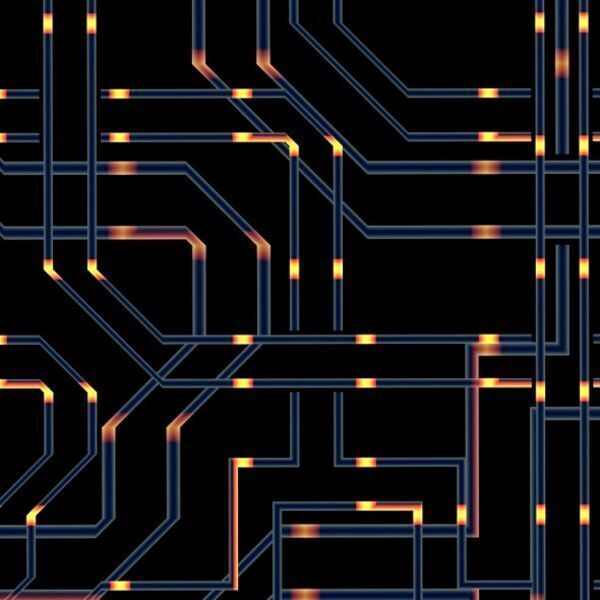
Quantum Computer Made from Photons Achieves a New Record
"The limited system made a notable advancement on the road to beating classical machines. In the race to create a quantum computer that can outperform a classical one, a method using particles of light (photons) has taken a promising step forward. Jian-Wei Pan and Chao-Yang Lu, both at the University of Science and Technology of China, and their colleagues improved a quantum computing technique called boson sampling to achieve a record 14 detected photons in its final results. Previous experiments were capped at only five detected photons. The increase in the number of the particles is small, but it amounts to a 6.5-billion-fold gain in “state space,” or the number of ways in which a computer system can be configured. The larger the state space, the less likely a classical computer can perform the same calculation." [...]

Lithium-Sulfur Battery Project Aims to Double the Range of Electric Airplanes
"Bye Aerospace is working with batteries from Otis Energy to hit the magic mark of 500 watt-hours/kilogram When General Motors briefly first wowed the world with its EV-1 electric car, back in 1990, it relied on lead-acid batteries that packed a piddling 30 to 40 watt-hours per kilogram. The project eventually died, in part because that metric was so low (and the cost was so high). It was the advent of new battery designs, above all the lithium-ion variant, that launched today’s electric-car wave. Today’s Tesla Model 3’s lithium-ion battery pack has an estimated 168 Wh/kg. And important as this energy-per-weight ratio is for electric cars, it’s more important still for electric aircraft. Now comes Oxis Energy, of Abingdon, UK, with a battery based on lithium-sulfur chemistry that it says can greatly increase the ratio, and do so in a product that’s safe enough for use even in an electric airplane." [...]
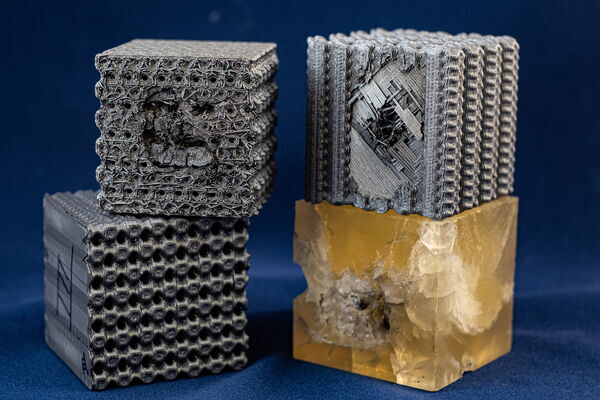
Theoretical tubulanes inspire ultrahard polymers
"Rice University-printed sample is full of holes, but stops bullets better than solid materials A lightweight material full of holes is nearly as hard as diamond. The mere dents left by speeding bullets prove it. Researchers at Rice University’s Brown School of Engineering and their colleagues are testing polymers based on tubulanes, theoretical structures of crosslinked carbon nanotubes predicted to have extraordinary strength. The Rice lab of materials scientist Pulickel Ajayan found tubulanes can be mimicked as scaled-up, 3D-printed polymer blocks that prove to be better at deflecting projectiles than the same material without holes. The blocks are also highly compressible without breaking apart. As detailed in Small, the discovery could lead to printed structures of any size with tunable mechanical properties." [...]
Modelos 3D
Com a disponibilidade de ferramentas que permitem dar azo a nossa imaginação na criação de peças 3D e espaços como o thingiverse para as publicar, esta rubrica apresenta alguns modelos selecionados que poderão ser úteis.
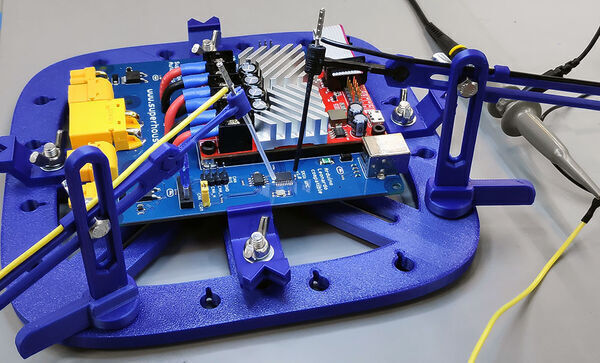
3D-printed PCB workstation using acupuncture needles
"This was a surprisingly fun and useful project! Connecting test probes to PCBs can be difficult when the contact points are very small, or when you need to keep the probes in place while using your hands to run tests or use a computer. Normal test probes for multimeters, oscilloscopes, and other equipment have to be held in place. This amazing 3D-printed PCB workstation uses acupuncture needles as test probes. The test probes are attached to adjustable arms that can hold them in position on the device under test. " [...]
Projetos Maker
Diversos Projetos interessantes.
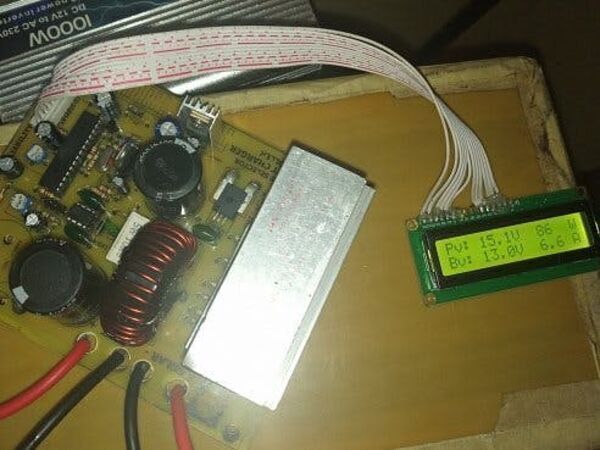
ATmega328 MPPT Solar Charger
"Solar chargers converts only 55% of the solar energy, this cost a lot of solar panels. MPPT chargers converts almost 99% of solar energy. Well, The most advance solar charge controller available in the market is Maximum Power Point Tracking (MPPT).The MPPT controller is more sophisticated and more expensive.It has several advantages over the earlier charge controller.It is 30 to 40 % more efficient at low temperature.But making a MPPT charge controller is little bit complex in compare to PWM charge controller.It require some basic knowledge of power electronics. What Is MPPT ?The Maximum Power Point Tracker (MPPT) circuit is based around a synchronous buck converter circuit..It steps the higher solar panel voltage down to the charging voltage of the battery. The Arduino tries to maximize the watts input from the solar panel by controlling the duty cycle to keep the solar panel operating at its Maximum Power Point.The Maximum Power Point Tracker (MPPT) controller increase charge current by operating the PV module in a manner that allows the module to produce all the power it is capable of a conventional charge controller simply connects the module to the battery when the battery is discharged. When the 75W module in this example is connected directly to a battery charging at 12 volts its power production is artificially limited to about 53 watts." [...]

DIY Arcade Machine
"This project was done as part of our project week at University of Applied Sciences Osnabrueck. It was inspired by already available Instructables like: Arcade Spielekonsole Mit Raspberry Pi Barcade Arcade for all Except having an arcade machine after finishing this project, you will also have a machine, that is able to stream Youtube videos, show pictures or play music from a NAS or harddrive/USB. Sixteen People worked in a team together to finalize the arcade machine within a time range of five days. Due to the amount of members in the group it was possible to allocate the different steps of building the machine in order to work more efficiently. Supplies: For the case: Tools: Hammer, saw, cordless screwdriver, drill set, angled drill Optional (if you want led's): soldering iron, wires (choose size based on number of led's), powersupply for leds/arduino (if its not already included in your led set) Materials: wood (for exact measurement, see step 2), a bag of screws and screw spaceholders, 1mm spaceholders (2x), hinge (2x) For the electronics: Raspberry Pi3b+ and powersupply (optional: case / recommended: cooling kit for RPi3b+) SD-Card (google recommended sd-cards for RPi or pick the one we used) Audio amplifier, speaker and any powersupply from 12-24V DC (also some speaker wires and a audiocable 3.5mm to cinch) Joystick and button set A monitor or old screen (should support HDMI or you will need a HDMI - VGA adapter). You just need to make sure, that the screen will fit on the front of the machine (see step 2 for sizes)." [...]
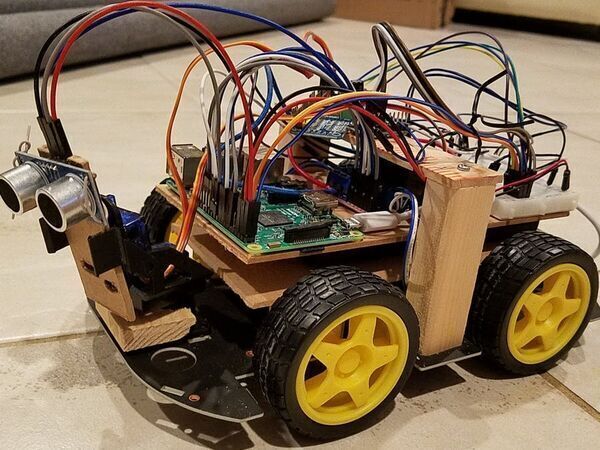
DIY RaspiCar - phase 1
"DYI RaspiCar can drive, survey it surrounding and decide its next path. Best of all, the parts cost only $100. Overview DIY RaspiCar is an autonomous car built on Raspberry Pi, inexpensive parts and scraps. The purpose of this project is to build a car driven by algorithm without human intervention. This project is structured in 4 layers as described below: First layer - algorithm that interprets data from sensors, camera, and determine the car drive path. Second layer - software modules layer, consisting of 2 sub layers of maneuver skills and car basic functions." [...]

bouLED
"Icosahedric stabilized LED display bouLED is a LED-covered icosahedron that can display images. Thanks to an AHRS attitude sensor, the images are stabilized so that they appear not to move when bouLED is rotated. Each facet of the icosahedron is a PCB that carries 79 of the classic SK9822 RGB LEDs (1580 LEDs overall). We ordered APA102C LEDs but received SK9822 clones (even nicer, in fact). Even though it is not shown in the gallery, bouLED is typically inside an acrylic sphere for protection. bouLED was Hichem Ghandri, Lucas Lebailly and Matthias Rabault's graduation project for Tlcom Paris's masters-level degree in embedded systems." [...]

Nano Weather Shield V1.1
"Display weather information and activate RGB color patterns via this shield, including built-in BMP280 and photoresistor, designed by me. Description Even though it is my first attempt at designing a PCB board and layout, I wanted to share with you my project step-by-step and will continue to post my further electronics projects including PCB designing or any possible improvements to this project here. In this particular project, I contemplated a shield for Arduino Nano, which can gather weather-related information by a built-in BMP280 Temperature and Pressure Sensor, a photoresistor, and a vibration sensor. To get more information about other features and specifications of Nano Weather Shield V1.1, check out the features section below. All components presented in this project and PCBA service are sponsored by SeeedStudio, except for optional components - Arduino Nano and 20 x 4 LCD Screen. You can try their PCB assembly service from here." [...]
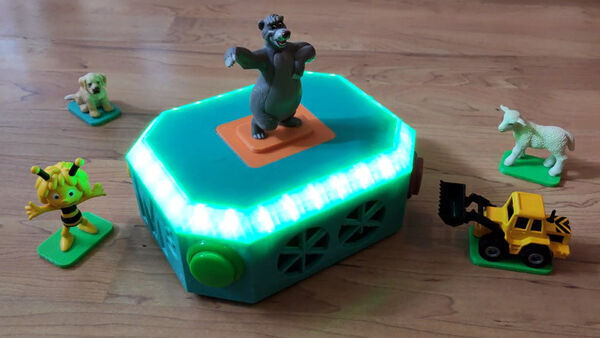
Marta Musik Maschine
"Marta Musik Maschine is a DIY, RFID enabled, multi-purpose, audio and light device for kids. It’s open source and you can build one yourself. It’s not hard at all, I promise. Welcome to my blog about Marta Musik Maschine! On the next few posts I’ll try to explain why and how I built a toy for children of around two years and up. This blog is dedicated to the idea of you, the reader, understanding my design considerations, allowing you to build your own M3 and if you like advance the casing, electronics or software part of this project." [...]

Digi-Comp I Redux
"This Instructable is my tribute to the individuals from the 1950's and 60's that helped to promote computer learning by marketing simple electric or mechanical "computing" devices. While not what we would consider true computers by today's standards, these machines were ingeniously designed, shipped with well written and instructive manuals, and most importantly were affordable to the average person. Lately I have been making replicas of some of these classic "computers". Originals are now rare and very expensive to buy when they infrequently appear for sale on eBay. In fact most of my replicas were modeled from photos because I could not find or afford an original. " [...]
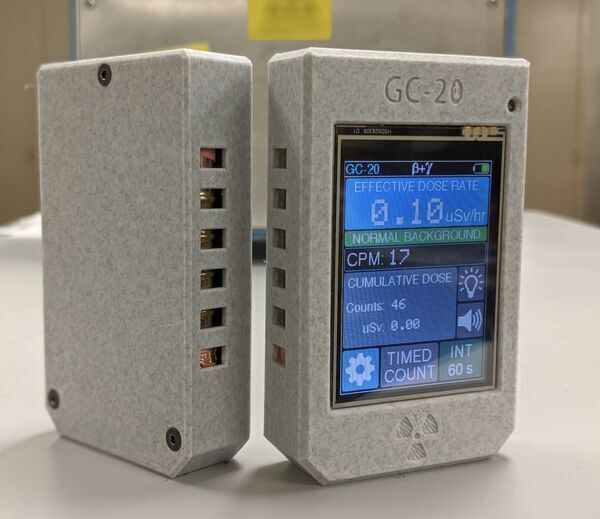
New and Improved Geiger Counter – Now With WiFi!
"In one of our previous tutorials, we examined the development of a DIY-Geiger Counter showing the efforts of “Instructable” user Prabhat who combined the ESP8266 with a touch screen display to create a truly intuitive version of his Geiger Counter. He recently created an updated version and today’s tutorial will focus on how this new version of the Geiger Counter can be replicated. The Geiger counter is an instrument used for detecting and measuring ionizing radiation. It is one of the worlds best-known radiation detection instrument as it can be used to detect ionizing radiation such as alpha particles, beta particles, and gamma rays and its is usually used as a handheld radiation survey instrument, warning users when in the region of dangerous ambient radiation levels with an all-too-familiar clicking noise. While this project retains some of the features from the first version, like the use of the ESP8266 and a touchscreen interface, rather than just implementing the detection of radiation levels like the first version, it combines a Geiger counter, a dosimeter and a radiation monitoring together in a single package that is 50% less thick, and with loads of new software features! Some of the new features include: A more intuitive GUI Displays counts per minute, current dose, and accumulated dose on the home screen Sensitive and reliable SBM-20 Geiger-Muller tube Variable integration time for averaging dose rate Timed count mode for measuring low doses Users can choose between Sieverts and Rems as the units for the displayed dose rate User-adjustable alert threshold Adjustable calibration to relate CPM to dose rate for various isotopes Offline data logging Post bulk-logged data to a cloud service (ThingSpeak) to graph, analyze and/or save to computer Monitoring Station mode: device stays connected to WiFi and regularly posts ambient radiation level to ThingSpeak channel 2000 mAh rechargeable LiPo battery with a 16 hour run time and a micro USB charging port No programming required from the end-user as things like the WiFi setup is handled through the user interface." [...]

syncing time via VGA
"The title is slightly misleading :-) What it really is, and this is a TL;DR too: PPS via Arduino into the I2C pins of a VGA connector of a Linux-running-PC which then gets interfaced to NTPd. how As described above, there's an Arduino to which I connected a PPS source. This PPS source ("Pulse Per Second") gives a pulse every second. For my experiment I used a simple TCXO (temperature compensated crystal oscillator, a 10MHz TCXO with a PicDiv to make that into a PPS signal) but a GPS with a PPS pin is preferred. On the Arduino runs a custom script. This script waits for an I2C request to which it should respond in a short time (else the requester times out)." [...]
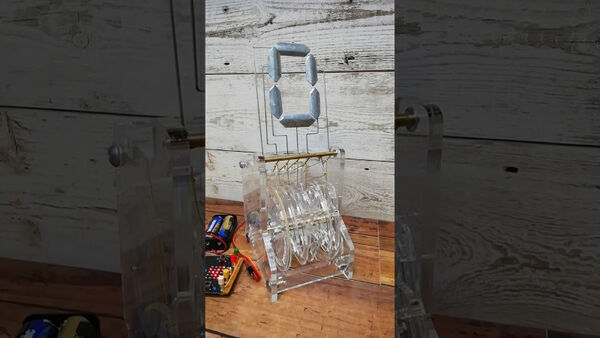
Building a mechanical 7-segment display
"This is the document of making assignment work for “Building automata with micro:bit workshop” which is organized by FabLabSENDAI – FLAT. It’s written by Tomohiro Tsuchita who is the maker of this mechanical 7-seg display in Japanese, and translated into English by FabLab SENDAI – FLAT. About workshop In the workshop, I’ve learned basic programming skill with micro:bit, some mechanical structures and movements for building automata and also famous artists who build automata. Assignment : Make something beautiful but totally useless. After the lecture, I decided my theme that “Turning a utility to useless by changing its structure.” And I thought like “How about 7-segment display as my target ?”. The 7-segment display is a well-design method showing one number from 0 to 9 with 7 tiny segments." [...]
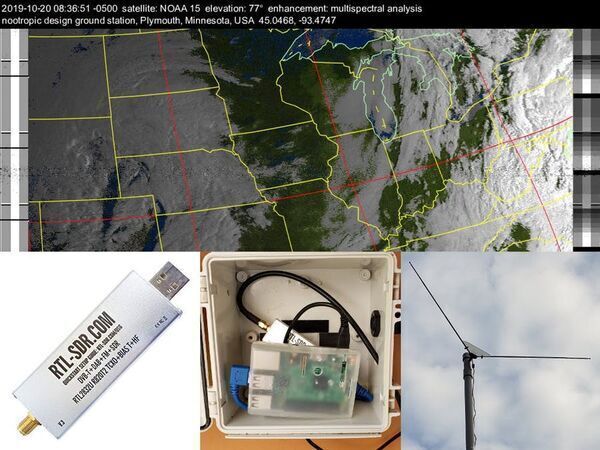
Automated Weather Satellite Ground Station
"Create a fully automated ground station that will receive/decode NOAA weather satellite images and upload them to an AWS S3 website. This project will show you how to create a fully automated ground station that will receive and decode NOAA weather satellite images and upload them to your own website served from an Amazon AWS S3 bucket. With this project you don’t need your own server or have to run your own website infrastructure. Have a look at my AWS site that is updated automatically all day long. Oh, you want a site like this, too? Full of images you decoded from space?" [...]

Arduino and Booleans: The truth is greater than zero!
"1 Boolean logic with Arduino Binary and boolean sometimes seem like buzzwords, particularly “binary,” but that’s just because people become so fond of this mode of thinking once they get into it. Hint: They’re the cool geeks with Ferraris. At the heart of things, binary is a machine thing, and if you want to control machines, especially microcontrollers, then you have to dig into binary once in a while. Especially the Arduino Uno (atmega328p), which has only 2KB SRAM. It’s a lean system that requires you to be clever if you want it to run large programs. Storing large arrays in PROGMEM and EEPROM (flash) will only get you so far." [...]

Motor Temperature Estimation Without a Sensor
"I just finished building a bunch of Mini Cheetahs which the lab is loaning out to other research groups. Since we're giving these to people who for the most part aren't hardware oriented, these robots need to be even more robust than the original one. One piece of that is preventing the motors from burning out. During normal operation with a good locomotion controller, the motors barely even get above ambient (even going 3.7 m/s, the motors weren't warm to the touch afterwards). However, it's really easy to write a controller that rapidly heats up the motors without actually doing anything - railing torque commands back-and-forth due to instability, joints mechanically stuck against something, machine-learning algorithm flailing around wildly, etc. We haven't burned out any motors on the original Mini Cheetah yet, but I think our lab members all have a pretty good sense of what's good/bad for the robot, and know to shut it down quickly if something bad is happening." [...]
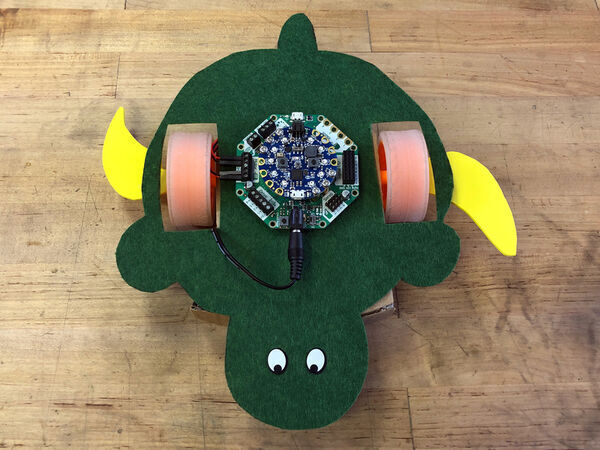
Bluetooth Turtle Bot with CircuitPython and Crickit
"You can make your own adorable turtle bot and control it from your mobile device using Bluetooth LE! This cute little bot uses the Circuit Playground Bluefruit as the brains and BLE communicator, and the Crickit platform as the brawn to drive two DC gearhead motors. You can drive forward and backward, turn left and right, and even change the colors of the built-in NeoPixel ring on the Circuit Playground Bluefruit, all from the Adafruit Bluefruit app for iOS and Android. Plus you can get crafty with the felt or foam and decorate this cardboard chassis bot like a cute turtle! " [...]
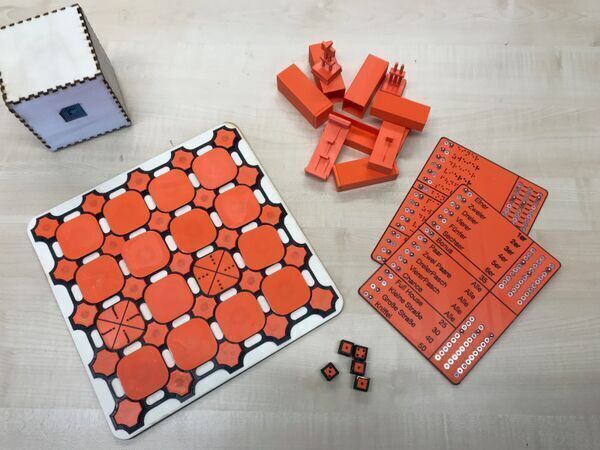
HapticGames
"Game modifications for using haptic instead of visual senses Most games work with visual clues, which results in an decreased fun for visual impaired people. As a sidetrack of the Personal Photonics project (https://hci.rwth-aachen.de/pp [https://hci.rwth-aachen.de/pp]), funded by the german ministry of education and science for developing an haptic toolkit, these game modifications happens due to inspirations of the community. They are still mostly first steps at the moment, just to check if these ideas are feasible and make fun. " [...]
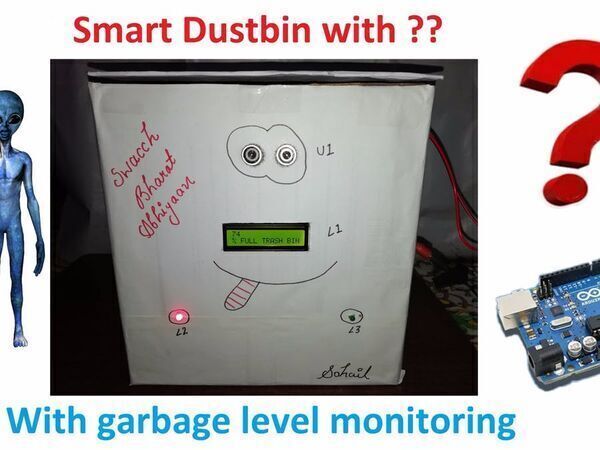
Smart Dustbin with Garbage Level Monitoring
"An advanced smart dustbin project. Hey all! How's you doing? Ever wondered making Smart Dustbin that monitors garbage level..?? I am back with a similar type of project. In this video I made Smart Dustbin that open and closes lid and senses the garbage level and displays it on lcd screen." [...]

60V to 5V @ 3.5A Buck converter with USB output
"This is a 60V to 5V – 3.5A step down DC-DC converter based on TPS54360B from Texas Instruments. Sample applications are: 12 V, 24 V and 48 V industrial, Automotive and Communications Power Systems. The TPS54360 is a 60V, 3.5A, step down regulator with an integrated high side MOSFET. The device survives load dump pulses up to 65V per ISO 7637. Current mode control provides simple external compensation and flexible component selection. A low ripple pulse skip mode reduces the no load supply current to 146 μA." [...]
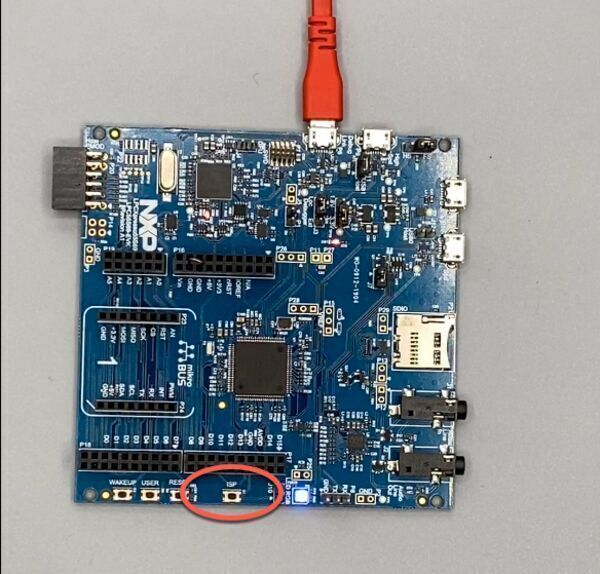
Investigating ARM Cortex® M33 core with TrustZone® – In-System Programming Tutorial
"This week I’m back to the normal ‘Tutorial’ format with a look at the In-System Programming feature in the boot ROM of the LPC55S69. I’ll use the NXP-provided command-line program blhost and interface with the ROM to erase the flash and download simple LED blinky programs. I used MCUXpresso IDE to build the two blinkies. Both programs are based on the SDK example project lpcxpresso55s69_led_blinky and flash the blue LED on the board. The default program flashes the LED at 1 second, whilst the modified program flashes at 200ms. Changing the frequency is simply a matter of changing the parameter passed into the SysTick_Delay_Ticks() function." [...]

Buzz Wire with Score Counter
"The good old buzz wire game, this time with score counter (as well as indicator lights). After playing around with Arduino just to pass time for a while, I decided to make an enhanced version of the good old buzz wire game that counts your failures and goes nuts if you hit the wire 10 times! " [...]

Make Arduino XY Plotter Drawing Robot Polargraph
"How to make XY Plotter Drawing machine. With Drawing Robot you can draw images on wall, panel or paper. In this tutorial we will learn how to make XY Plotter Drawing machine. With Drawing Robot you can draw images on wall, panel or A4 paper. You can print pictures or print text. Also we will learn how to install and use the Polargraph program for robot control." [...]
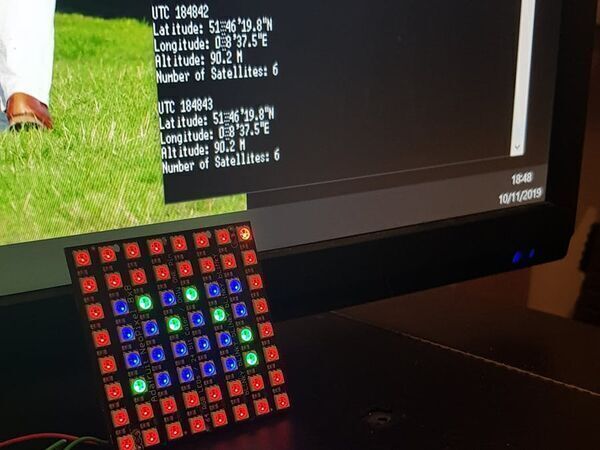
FPGA Based Binary Clock
"FPGA based binary clock, which uses GPS for the time reference. Introduction Measuring time accurately has through out history presented a number of challenges. It was only with the John Harrison's design of a reliable clock which could maintain a reference time at the Greenwich Meridian which enable accurate navigation in the 1700's and the charting of as yet unexplored seas and lands. Today we live in increasingly interconnected world and a accurate time reference is just as critical. Without a common time reference cell towers cannot easily synchronize codes and hand off calls as we pass from one tower to the next. Similarly time-stamping business and banking transactions without a common time reference can also be challenging and become an arbitration nightmare as to the sequence of events." [...]
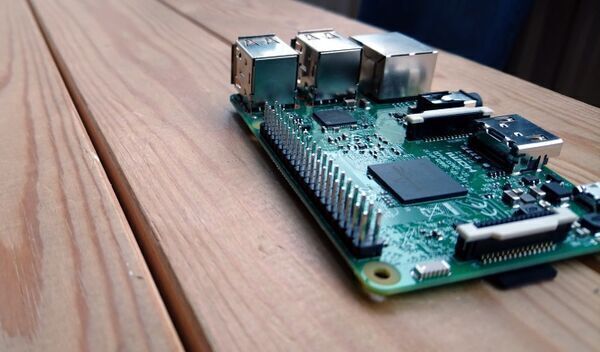
Network boot your Raspberry Pi
"This tutorial is written to explain how to set up a simple DHCP/TFTP server which will allow you to boot a Raspberry Pi 3 from the network. The tutorial assumes that you have an existing home network, and that you want to use a Raspberry Pi for the server. You will need a second Raspberry Pi 3 as a client to be booted. Only one SD card is needed because the client will be booted from the server after the initial client configuration. Due to the huge range of networking devices available, we can't guarantee that network booting will work with any device. We have had reports that, if you cannot get network booting to work, disabling STP frames on your network may help." [...]
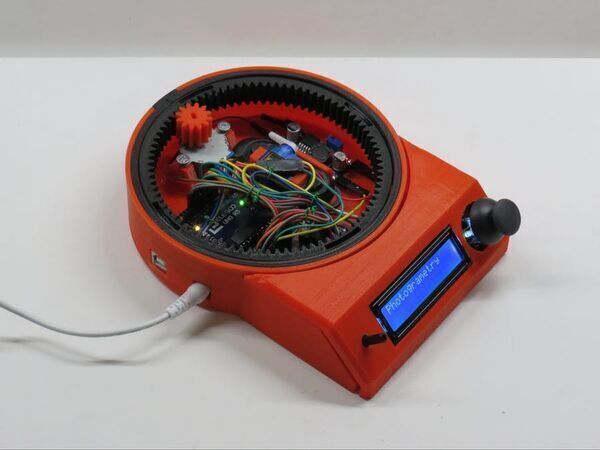
Arduino-Controlled Photogrammetry 3D Scanner
"A completely automated way to take photos and convert them into a 3D object. DESCRIPTION This turntable is a new and improved version of my hand cranked version (which is fully 3D-printable, no extra parts needed. Check it out here. It uses an Arduino UNO to control a 1602 LCD screen, a stepper motor and a 9g servo motor. The turntable can be used as a 3D scanner by taking photos of an object 360 degrees around it. These photos can be converted later on into a 3D model using photogrammetry software." [...]

Camera Timelapse Rig (IREnE)
"Camera sliders are fun tools to use for making dynamic timelapse videos, and they come with some cool features. This is a clever little gadget that moves like a camera slider but folds much smaller. Eggtimers are also commonly used to make a similar effect. Some high-end gear can slide and rotate the camera at the same time for a particularly cool effect. But how do you guild one that one that could go up to 11? IREnE (Inverted Radial, Extension, Eggtimer) is not only named for the clever woman (nee Adler) who outsmarted Sherlock Holmes , but also the clever functions it can perform." [...]
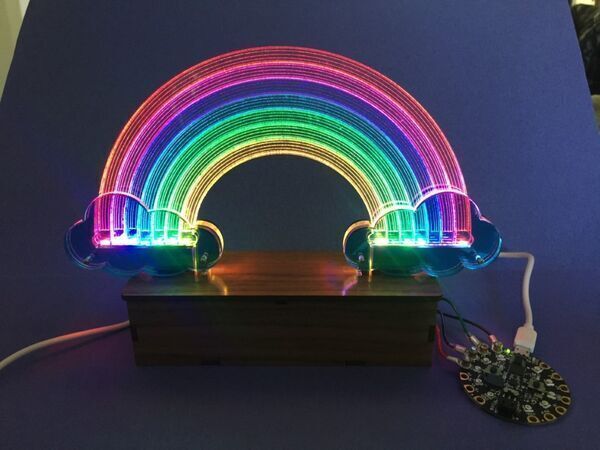
Edge-Lit Rainbow Weather Display
"Light prefers to take the shortest path, but under the right conditions you can make it bend and bounce, generating lovely effects in the process. This project takes advantage of some special properties of acrylic. Inside polished acrylic, light rays reflect off the smooth inner surfaces, preferring to escape at the rougher edges or scatter at imperfections in the surface. This internal reflection causes the light to suffuse the entire acrylic shape with a subtle uniform glow, even where it bends and curves. We can take advantage of light scattering by engraving patterns into the smooth surface of acrylic sheet then illuminating the sheet to generate a brighter glow at the etched spots. These edge-lighting effects are often seen in signage or décor used in dark venues (see “LED Nixie,” Make: Volume 66)." [...]
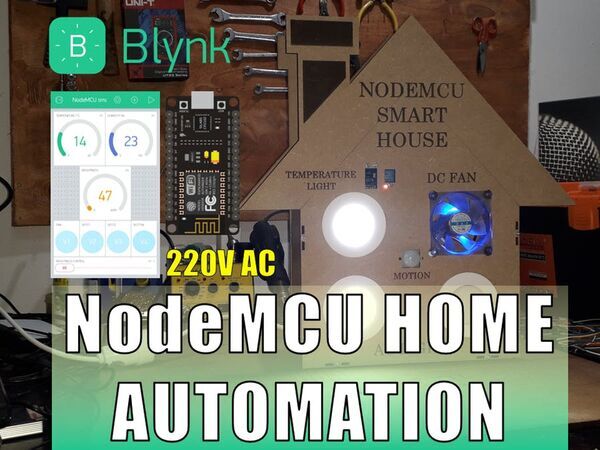
NodeMCU Home Automation
"If you want a NodeMCU device that could help you to control all your house electrical devices, then this will be your best guide Hey guys! I Hope you already enjoyed my previous tutorial "Arduino Heart Beat With ECG Display & Sound" and you are ready for a new one, as usual I made this tutorial to guide you step by step while making this kind of super amazing low cost electronic projects which is the "NodeMCU Home automation system". During the making of this project, we tried to make sure that this instructable will be the best guide for you in order to help you if you want to make your own Smart house, so we hope that this instructable contain the needed documents. This project is so handy to make specially after getting the customized PCB that we’ve ordered from JLCPCB to improve the appearance of our electronic device and also there is enough documents and codes in this guide to allow you create your NodeMCU project easily. We've made this project in just 4 days only, just two days to get all the needed parts and finish the hardware making and the assemble, then we have prepared the code to suit our project and start the testing and the adjustment. What you will learn from this Project: - Making the right hardware selection for your project depending on its functionalities." [...]
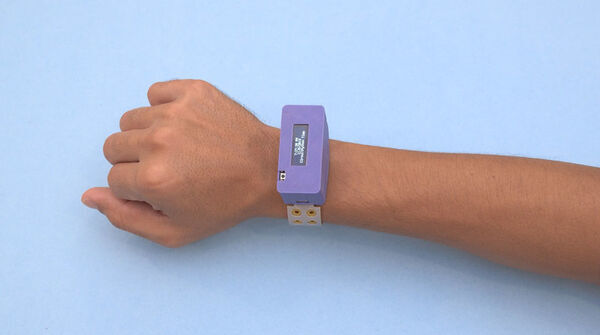
CircuitPython OLED Watch Clock
"It's CircuitPython Time! In this project we’ll show you how to make a watch using an Adafruit Feather M4 Express, an RTC module and an OLED display. This uses CircuitPython, which is a version of Python designed to run on microcontrollers. " [...]
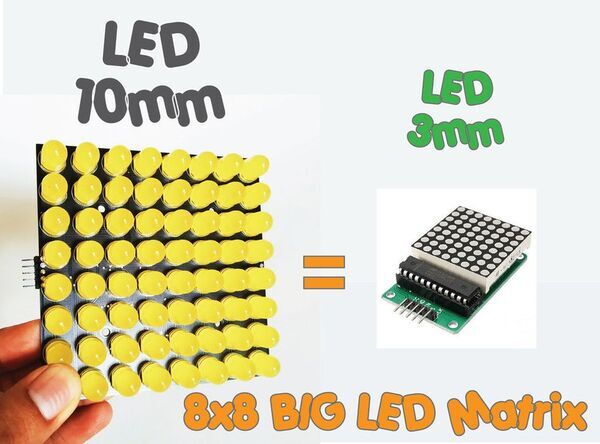
How to Build 8x8 BIG LED Matrix (MAX7219 LED 10mm)
"Have you worked with ready-made 8x8 LED matrix as displays? They come in various sizes and are quite interesting to work with. A large readily available size is around 60mm x 60mm. However, if you are looking for a much larger ready-made LED matrix, you may be out of luck. For this project, we will be building a single color large LED matrix display which is made up of a few large 8x8 LED 10mm matrix modules daisy-chained together. Each of these 8x8 LED matrix modules is around 100mm x 100mm in size." [...]
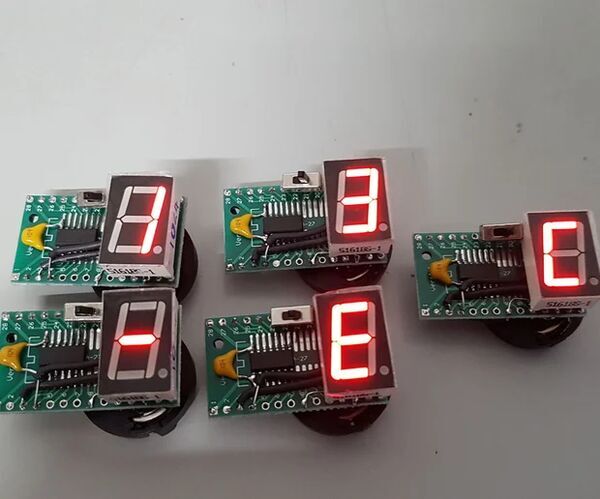
Personalized Message Displaying Trinkets
"Around last month, we were welcoming our new freshmen to the department. My friend came up with an idea that we should have some kind of gifts for them, and this is my take for that. It took me a day to experiment on how to build the first one, then several hours to build the rest 4. The trinket is ATTINY414-controlled. The message is stored on the MCU and then displayed one letter at a time on the common anode 7 segments display. You could have a very long message since my 10 letters word used up only 400 bytes of program space on the 4k device." [...]
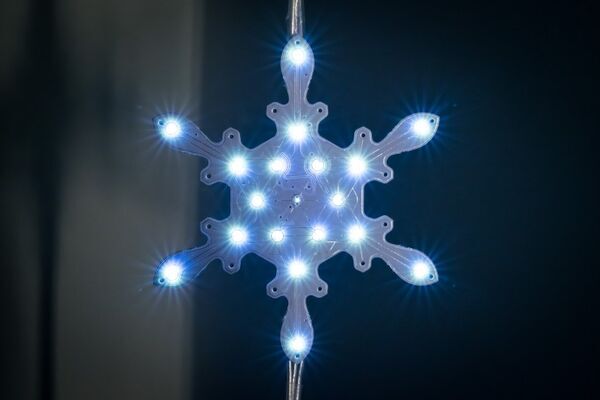
Snow Flake Decoration
"The snow flake project is a winter decoration consisting of a number of snow flake boards connected to one single string of wire. Each snow flake contains an own micro controller and 19 bright and beautiful white LEDs. Using very small and bright LEDs creates a unique and beautiful effect, like the sunlight sparkling in snow crystals. At the start, the individual snow flakes will communicate with each other and determine the own location in the strand. Next they display light patterns, which are synchronised between all boards. Technically, the design is dead simple." [...]
That's all Folks!



